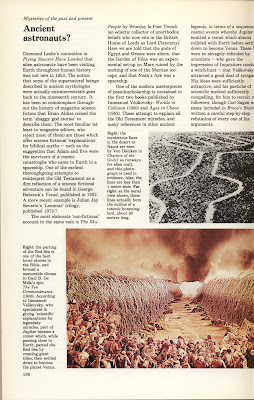The Science in Science Fiction is a large trade paperback with a suitably eye-catching cover illustration by Chris Foss. The book is organized into 12 chapters covering various topics dealt with in SF: ‘Journey into Space’, ‘Aliens’, ‘The Limits of the Possible’, ‘Powers of the Mind’, etc. The book is liberally illustrated with monochrome and full color diagrams, film and television stills, photographs, and illustrations taken from book and magazine covers. The text is written for the layman, rather providing more hardcore exposition; nonetheless more technically trained readers will find information of worth within the pages.
Not surprisingly some of the material is dated, but for many topics – the speed of light, gravity, time travel, etc., which have not seen any major revelations since 1983- the text remains relevant. Nicholls often refers to SF novels and short stories in his discussions of various phenomena, so you may get some leads in terms of looking for good SF of the era.
If you are wandering the aisles of a used bookshop and see a copy of Science it may be worth picking up, if only to see how science and SF were looking at things in the context of the publication date (for example, there is attention paid to Ronald Reagan’s ‘Star Wars’ scheme; Uri Geller and his spoon-bending antics; the film Alien; and other science pop culture artifacts of the early 80s).
I've posted some scans of some pages below (while I could not scan the full page for fear of breaking the book's spine, the scans do give a sense of the book's interior).














































































